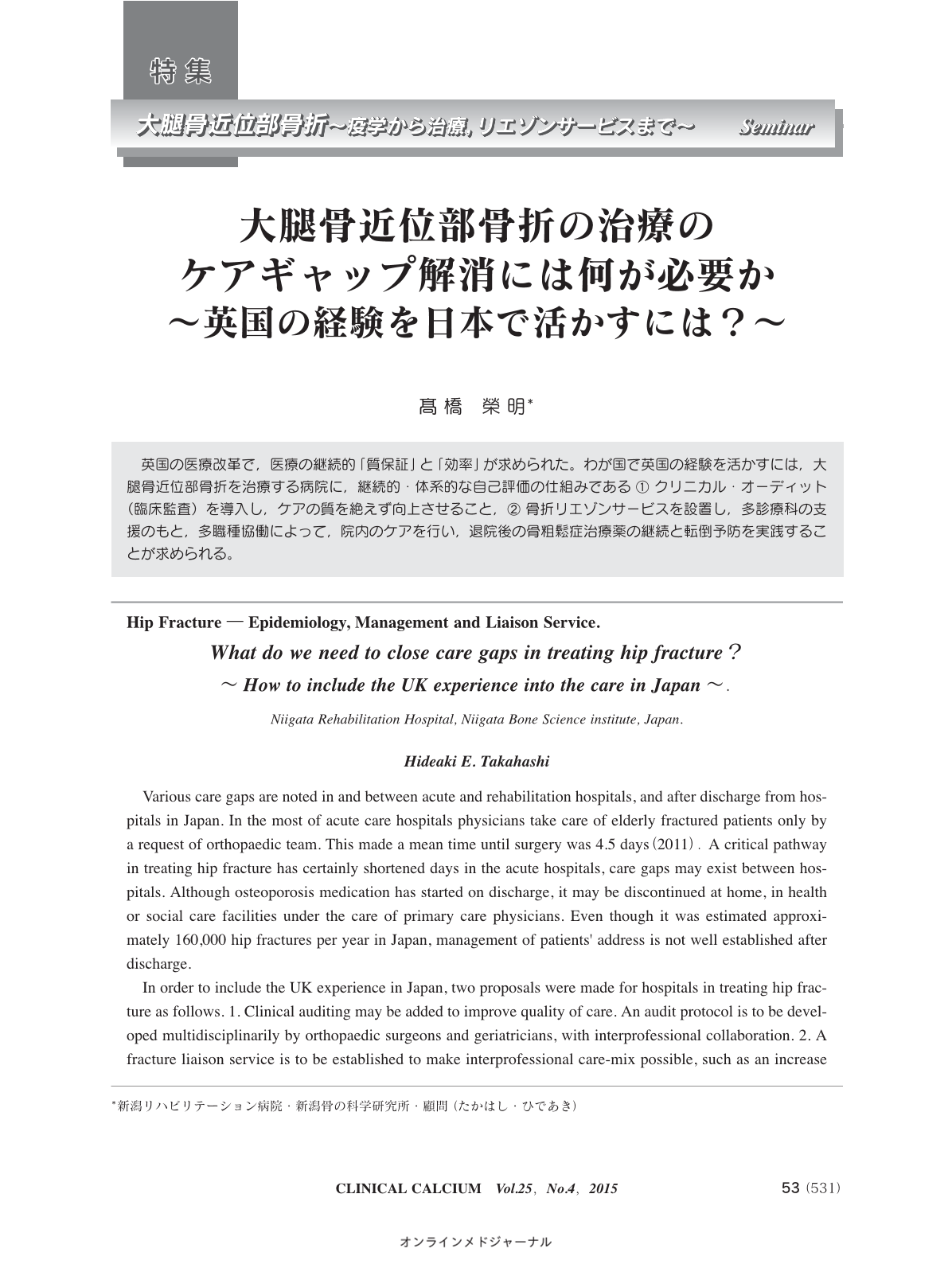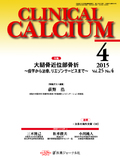Japanese
English
- 有料閲覧
- Abstract 文献概要
- 1ページ目 Look Inside
- 参考文献 Reference
英国の医療改革で,医療の継続的「質保証」と「効率」が求められた。わが国で英国の経験を活かすには,大腿骨近位部骨折を治療する病院に,継続的・体系的な自己評価の仕組みである 〈1〉 クリニカル・オーディット(臨床監査)を導入し,ケアの質を絶えず向上させること,〈2〉 骨折リエゾンサービスを設置し,多診療科の支援のもと,多職種協働によって,院内のケアを行い,退院後の骨粗鬆症治療薬の継続と転倒予防を実践することが求められる。
Various care gaps are noted in and between acute and rehabilitation hospitals, and after discharge from hospitals in Japan. In the most of acute care hospitals physicians take care of elderly fractured patients only by a request of orthopaedic team. This made a mean time until surgery was 4.5 days(2011).A critical pathway in treating hip fracture has certainly shortened days in the acute hospitals, care gaps may exist between hospitals. Although osteoporosis medication has started on discharge, it may be discontinued at home, in health or social care facilities under the care of primary care physicians. Even though it was estimated approximately 160,000 hip fractures per year in Japan, management of patients' address is not well established after discharge. In order to include the UK experience in Japan, two proposals were made for hospitals in treating hip fracture as follows. 1. Clinical auditing may be added to improve quality of care. An audit protocol is to be developed multidisciplinarily by orthopaedic surgeons and geriatricians, with interprofessional collaboration. 2. A fracture liaison service is to be established to make interprofessional care-mix possible, such as an increase of adherence of osteoporosis drugs and prevention of falls after discharge. A fracture liaison coordinator is to be assigned to the service in making a team approach possible to a patient and his/her family.



